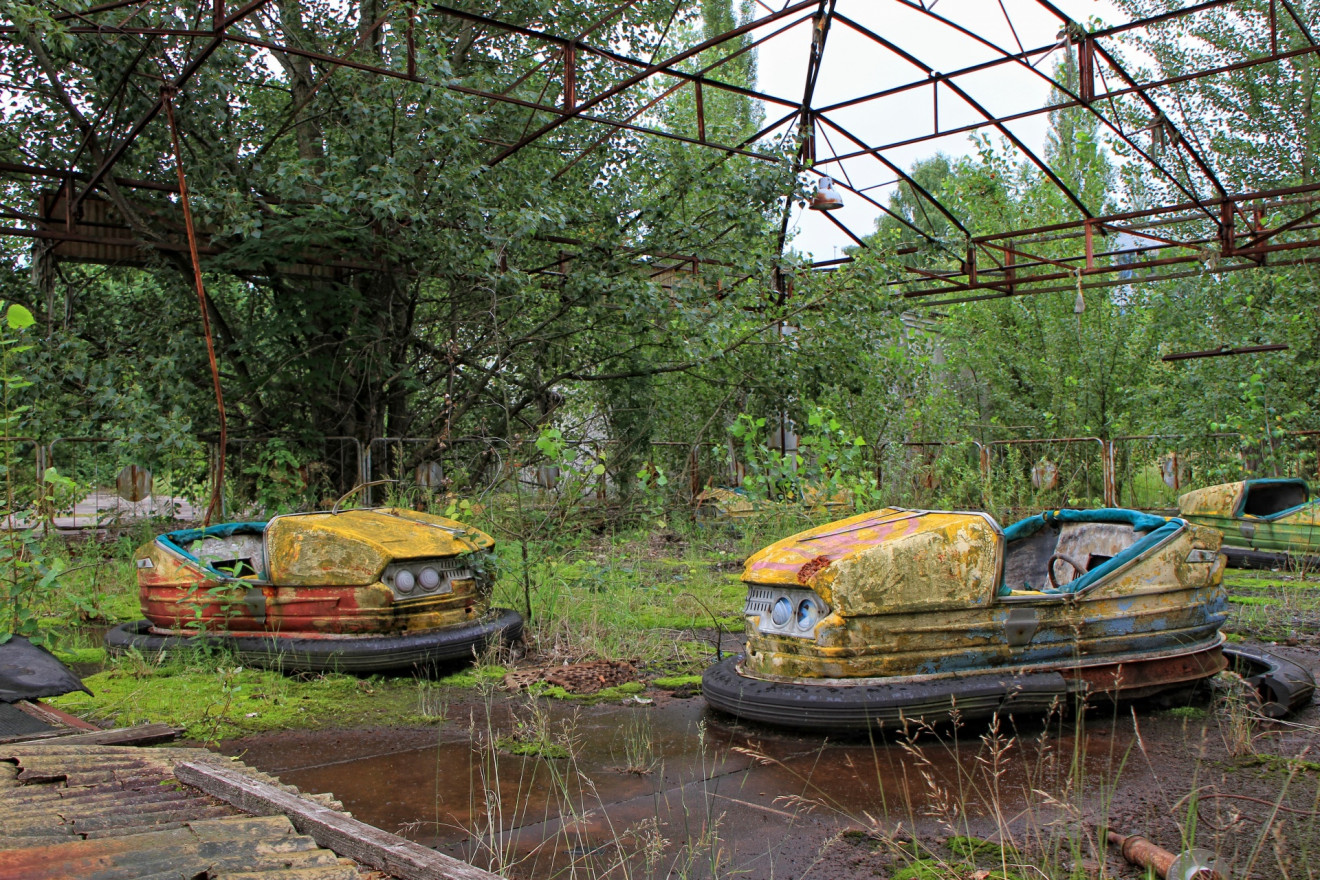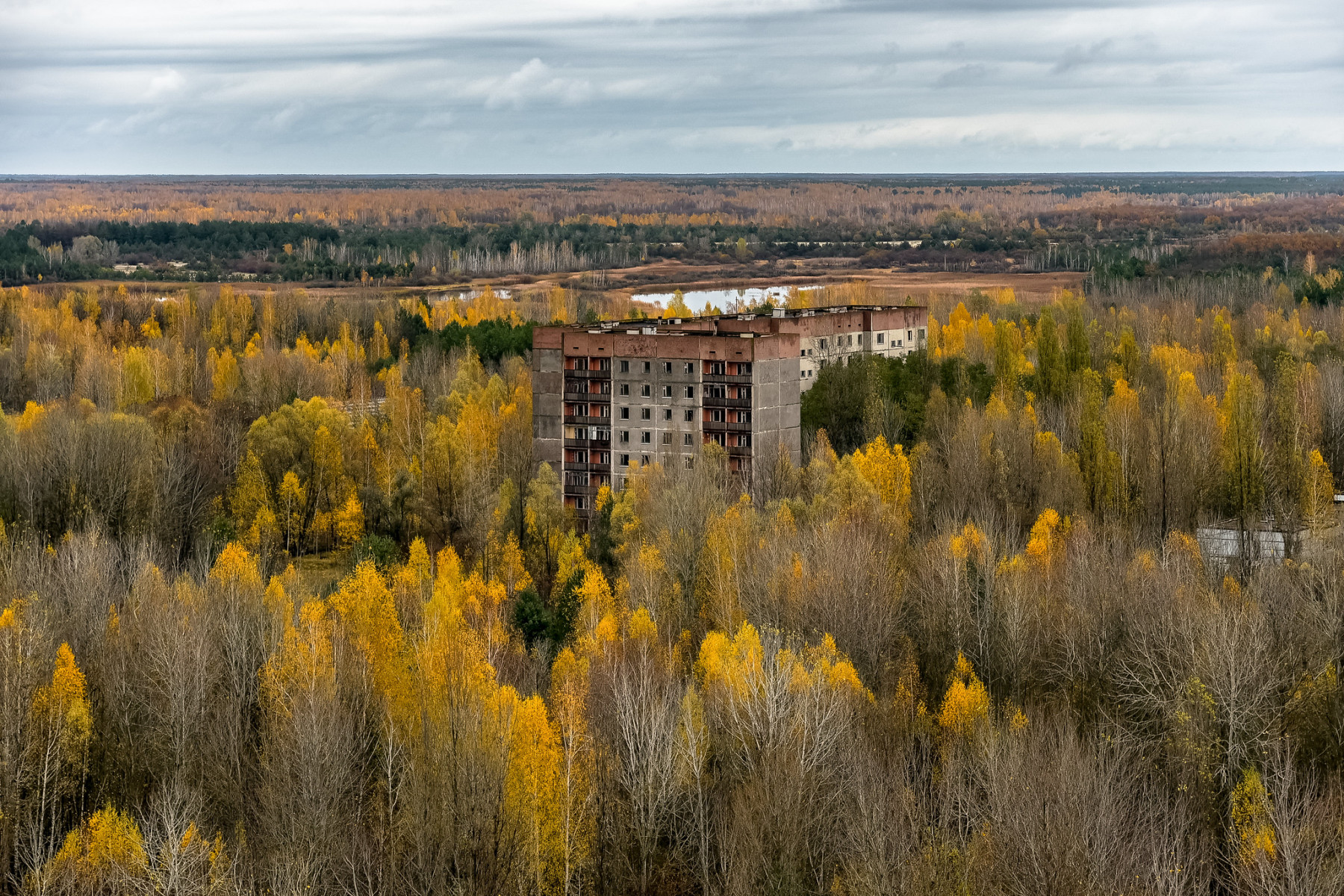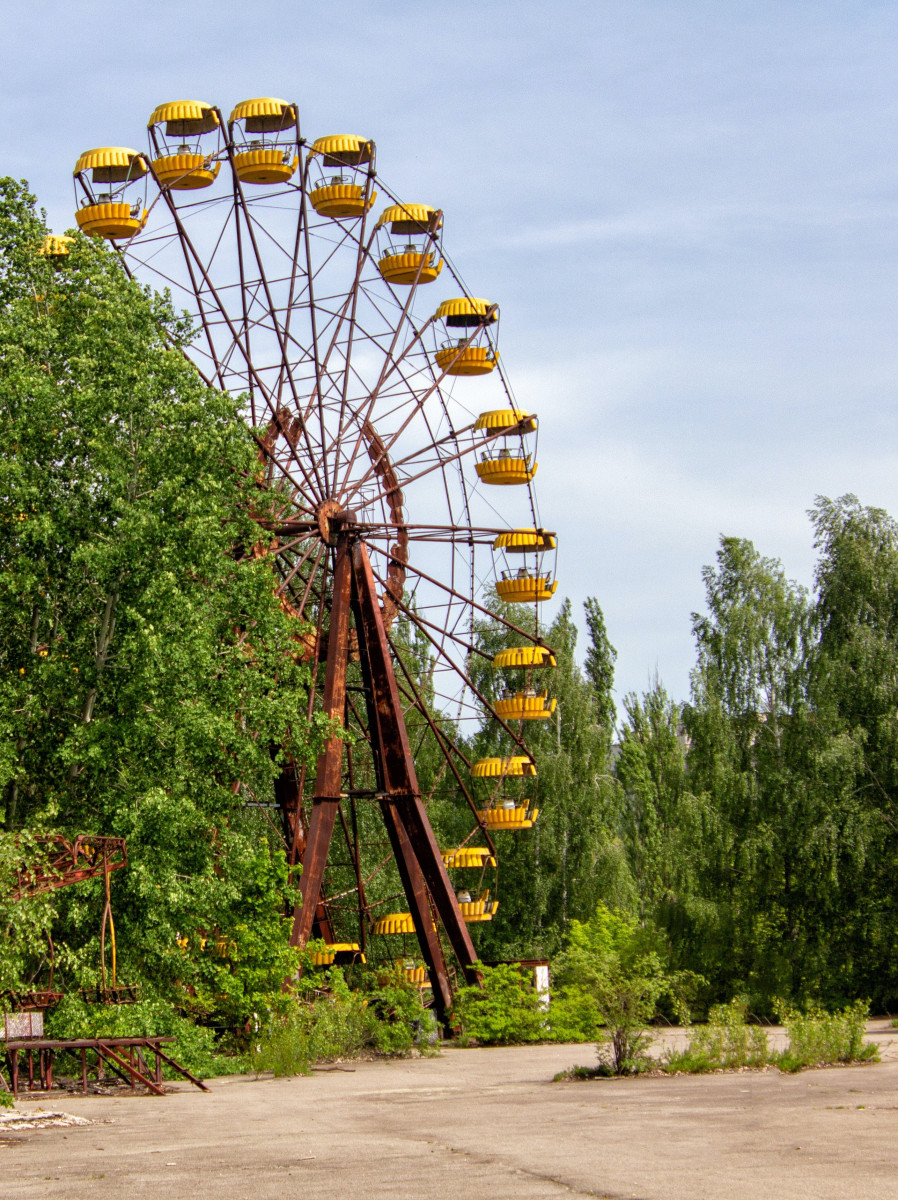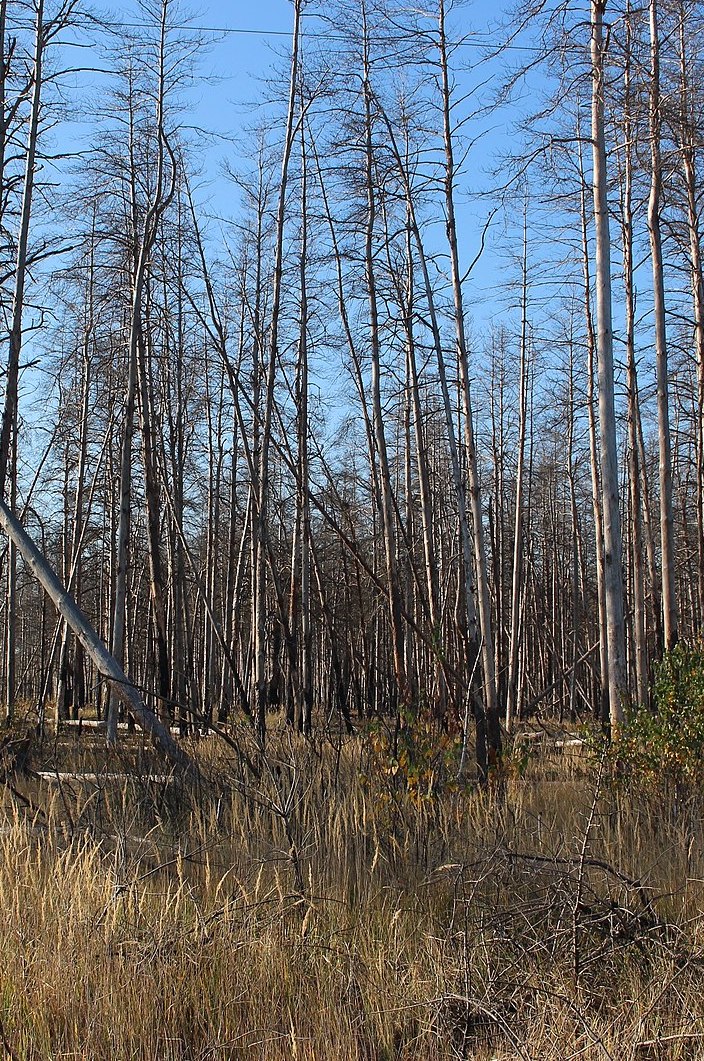
(C. Colourin/CC0 Public Domain)

(C. Colourin/CC0 Public Domain)
The sun had set on Chernobyl, but Germán Orizaola’s work was just getting started. He grabbed a flashlight and walked around the forest, searching for Eastern tree frogs. They’re electric green, making them easy to spot once you shine a light on them.
But Orizaola couldn’t see any frogs. He heard them — the males in the area come out each night to sing their mating song in the hopes of attracting females. Their shrill, guttural quacks filled the air.
“It was in front of me, but I wasn’t able to detect it, to see where,” Orizaola says, “Until I realized it was black.”
The discovery that the Eastern tree frogs near Chernobyl were not their typical green color, but black, occurred on Orizaola’s very first night in Chernobyl, back on May 9, 2016. Orizaola, an ecologist at the University of Oviedo in Spain, traveled there to study how long-term radiation exposure affects frogs.
He believed the frog’s black color resulted from an adaptation to radiation. To test this idea, he returned for the next three years during the breeding season to catalog the color of frogs within the Chernobyl Exclusion Zone and just outside it.
After the nuclear power plant accident in 1986, large amounts of radioactive nuclides shot into the environment at random. The most radioactive nuclides have already decayed away, but a patchwork of radiation remains in the area.
Some parts of the Exclusion Zone — the roughly 1,000 square miles of land around the power plant, about the same size as Yosemite National Park, demarcated by the former Soviet Union for safety — have radiation levels as low as the rest of the world, while other areas remain quite high. For more than 30 years, animals here have been living and breeding around radiation.
This positions Chernobyl as a unique place to study the effects of radiation — a natural laboratory of sorts. “There aren’t many places in the world where you can see that kind of long-term, higher-level exposure to radiation,” says David Copplestone, a biologist at the University of Stirling in Scotland.
But over time, as the environment has begun to bounce back, the laboratory of Chernobyl has also developed into an ideal place to study re-wilding, the process of ecosystems returning to their natural state. The damage done by the presence of radiation has one benefit, at least: the absence of humans. Chernobyl is now one of the largest nature reserves in Europe.

One reason that makes Chernobyl better for studying radiation than a traditional lab setting is that you can see how each part of the ecosystem interacts with the others. If you expose an animal to radiation in the lab, you’ll be able to see some of the effects on DNA, health, lifespan, and other factors at the individual level. But in real life, radiation affects their food source and their competitors, and inherited mutations passed down to offspring can interact with the offspring’s own continued radiation exposure. Nothing is affected in isolation from the rest of the ecosystem.
Olena Pareniuk, a radiobiologist at the National University of Life and Environmental Sciences of Ukraine, studies how the soil microbiome in the Exclusion Zone responds to radiation. As a whole, bacteria are much more resistant to radiation than humans. At levels “when the human being will die, bacteria will be like, ‘What just happened? Everything is fine,’” Pareniuk says.
This means radiation won’t sterilize the soil, but since some bacteria species are more sensitive to radiation than others, the ratio of species and what they decompose can change, Pareniuk says. This can change the amount and type of compounds available to plants. Studying how one type of bacteria responds to radiation in the lab will not reveal as much as studying the soil microbiome as a whole.
But the richness of Chernobyl is a double-edged sword. Each layer of complexity makes field studies more realistic, but it also makes it more difficult to figure out exactly what is going on and to attribute any one effect to radiation. Results from field studies often need to be replicated in the lab before any conclusions can be drawn, Copplestone says.
Tim Mousseau, a biologist at the University of South Carolina, first visited Chernobyl in 2000. He was part of the first group of scientists to study how the accident affected the environment and animals, instead of humans. “It sort of began with studies of the birds for the first few years and then it kind of snowballed into studying the entire biological community and ecosystem level effects,” he says.

In areas with higher radiation levels, Mousseau and his collaborator Anders Møller observed some dramatic effects, like DNA damage, increased tumors, stunted reproduction, increased levels of parasites, and dwindling numbers in species of birds, fish, and rodents.
But not all animals were suffering from the radiation. About two thirds of the Exclusion Zone is relatively untouched by radiation, Mousseau says. Animals in these areas appear to be thriving. Populations continue to grow, and biodiversity is increasing. Wolves, bears, and wild horses have moved into the area. And some animals, like the Eastern tree frog, seem to have adapted to the radiation.
Orizaola — referred to as “the frog guy” by Mousseau — came to Chernobyl not because he is particularly interested in radiation, but because the area provides a way to study how the tree frogs cope with and respond to a known and measurable environmental stressor.
Orizaola published his frog findings from his three seasons of field work earlier this year. Outside of the Exclusion Zone, most frogs were the typical bright green. But inside the Zone, most frogs were visibly darker, ranging from dark green to gray to black.
The tree frog species has a natural variation in color. “One in every 20, 40, 50 frogs is a bit different,” he says. The darker frogs have higher levels of melanin, a pigment that absorbs UV radiation and, in some species, like mushrooms and mold, can absorb more damaging types of radiation.
Orizaola thinks that at the time of the nuclear accident, the random portion of frogs that were a darker color survived the blast and were in good enough shape to breed. Now, the black color is the dominant one in the population. Passing an advantage down through generations of frogs is not something you could easily study just by exposing some frogs to radiation in the lab — it’s difficult to replicate the complexities of an entire population and ecosystem.
Radiation is only the start of what you can study at Chernobyl. “For me, the real interest in Chernobyl is about re-wilding,” Orizaola says. Each study he conducted on how radiation affects respective aspects of the frog population’s health, found that it had “no effects, no effects, no effects, no effects.”

The initial blast of radiation hurt the environment — like the pine trees in the immediate vicinity of the reactor that turned red as they died, earning the area the moniker of The Red Forest— but now, parts of the area seem to be doing really well. “I’m absolutely sure that the nature really benefited, not from radiation but from the absence of man over there,” Pareniuk says.
Chernobyl is now a giant nature reserve. In a densely populated continent, there aren’t many places with that much land free from human noise, activity, and hunting. “It’s a huge, huge, huge area that 36 years ago, moved from 350,000 people living there to now almost none,” Orizaola says. “It’s changing the landscapes, so all these agricultural fields are transforming into forests. And all these endangered animals are occupying Chernobyl.”
The area is so removed from human activity that the animals haven’t learned to be afraid of humans. Once, Pareniuk encountered a family of wild boars and struggled to scare them away. “I mean, it’s really funny, and a little bit annoying, because they are not afraid of you,” Pareniuk says. “I got used to being the queen of nature, but no. Not in Chernobyl.”
But the negative impact of humans returned this year when Russia invaded Ukraine. Soldiers occupied Chernobyl in February and March 2022. The war halted all ongoing research. “It became quite difficult to concentrate on something that is not related to war,” Pareniuk says.
After the Russian soldiers left at the end of March 2022, work in Chernobyl slowly started to resume. Mousseau was one of the first scientists to return to Chernobyl in October. “We’re hoping to be able to look at the effects of this major disturbance — the war, the invasion — on the animals,” he says. “Since, you know, it was very noisy and dusty for a while there.” Pareniuk hopes her own soil studies will start back up in April.
Orizaola is shifting his field work away from radiation to focus on what Chernobyl can teach us about conservation and the resiliency of nature. He believes this type of work “is transforming Chernobyl from something negative into something quite positive.”